
CENNI STORICI
La penisola di Sirmione, cantata da Carducci sulle orme di Catullo, è una delle località fra le più incantevoli del Benaco, posta quasi a spartiacque fra il Garda bresciano e quello veronese. Essa è formata da un istmo di terra lungo tre chilometri e si protende sul Garda, dalla sponda del lago, fra Peschiera e Desenzano, da sud verso nord. Tre piccole alture la elevano dallo specchio dell'acqua: la prima denominata Cortina o Cortine, quella di mezzo, Mavino o Mavine e quella settentrionale, dove insistono le cosiddette “Grotte di Catullo”. Splendido il paesaggio: oliveti, macchie di pini e vigneti ancora vi dominano. Dal punto di vista geografico ed amministrativo, Sirmione, oggi in Lombardia, era sempre stata considerata terra veneta: ciò almeno fino al 1816, quando fu tolta alla provincia di Verona, cui apparteneva fin dai tempi di Catullo, per essere aggregata a Brescia, ma rimanendo sempre, e tuttora, dal punto di vista ecclesiastico, nella diocesi di S. Zeno.
DA VEDERE
La villa romana. Forse l'esistenza di fonti gas-solforose scaturenti dal fondo del lago potrebbe spiegare l'origine della villa romana che occupa tutta la punta settentrionale della penisola. In essa sono presenti appunto degli impianti che fanno pensare ad uno sfruttamento di quelle acque e di quei gas termali che costituiscono tuttora parte della ricchezza di Sirmione. A meno che, questa grande villa non sia piuttosto da intendere, per la sua posizione strategica, come la sede di un importante presidio militare, tale da controllare i movimenti dal Trentino al Mantovano e dal Veronese al Bresciano. C'è anche chi ritiene che la villa di Sirmione, citata da Catullo nel Carme XXXI, appartenesse al patrimonio familiare del poeta, e fosse anzi stata costruita dal padre di costui, col probabile concorso dello Stato Repubblicano (siamo nel I sec. a.C.) verso il quale vi sarebbe stata una tacita ed esplicita dichiarazione di diritto all'ospitalità per personaggi di passaggio dalla Mansio, ossia cioè stazione per il cambio dei cavalli con possibilità di alloggio.
Le mura e la rocca. La rocca di Sirmione, antico fortilizio benacense, ebbe probabilmente le sue origini nel periodo romano. Successivamente e a più riprese, tra il XIII e il XV secolo, fu ristrutturata e ampliata per potenziare la fortificazione del borgo che, per la sua particolare collocazione in terre di confine, era considerato un avamposto per la strategia difensiva scaligera. Il nucleo originale della rocca coincideva forse con il cortile principale che si presume fosse delimitato da quattro solide mura con tre torri angolari. In quest’originaria costruzione era probabilmente inserito anche il "mastio" o una torre d’avvistamento. Nel XIII secolo, forse su commissione di Mastino I della Scala, fu eretta una prima cinta murarla, completata poi da una seconda che inglobava una parte del vallo in direzione sud-est. Nel XIV secolo venne fortificata la darsena e si recintò il borgo. Nel sec. XV la rocca fu consolidata, sotto la Serenissima. Le possenti mura, sfidando il tempo e l’incuria dell'uomo, fanno ancora oggi bella mostra di sé sulle rive del lago. Sul portale d'ingresso sono due stemmi scolpiti su pietra: a sinistra il simbolo degli Scaligeri, a destra lo stemma veneziano. Nel primo cortile interno, si può ammirare la gran torre alta 47 metri, dalla cui sommità le guardie potevano vigilare sulle zone circostanti. Sotto il porticato si conserva un lapidario romano, contenente un'ara dedicata a Giove ed alcuni mosaici pavimentali del I sec. a.C. rinvenuti durante gli scavi del 1959. Nel lapidario medioevale, si possono osservare vari reperti significativi, come il pluteo con due croci ed un archetto di ciborio col nome di Desiderio, re dei Longobardi, e del figlio Adelchi. Dal secondo cortile si può osservare la struttura del ponte levatoio e attraverso un cancelletto ci si avvicina alla darsena, che era il porto della rocca. Le sale del castello non hanno particolari pregi architettonici; il vastissimo salone ha un soffitto in legno del '500, con mobili e sedie di diverse epoche.
Le chiese.
La chiesa parrocchiale è dedicata a S. Maria Maggiore. Un primo accenno a questa pieve si trova nella bolla di Papa Eugenio III, del 1145, ma l'attuale costruzione risale alla fine del secolo XV e fu subito decorata dagli affreschi che tuttora la impreziosiscono, assieme a tele del Voltolini e del Brusasorzi.
Vicino c'era la chiesa, ora distrutta, di S. Salvatore che ebbe descrizione particolareggiata nell’Ottocento dall'Orti Manara. Di questo storico tempio non resta ora che un rudere.
Sulla collina più alta della penisola, ben conservata è la chiesa di S. Pietro in Mavino, già documentata nel secolo VIII. Priva di particolari ornamenti, restaurata, rialzata e decorata intorno agli anni 1320-1321, essa conserva, nella parte absidale, affreschi bizantineggianti modesti.
A metà dell’istmo, presso il cimitero, si trova ancora la chiesetta in onore di S. Vito, pure nominata in documenti del sec. VIII, mentre presso la Rocca è una cappella dedicata a S. Anna che, costruita alla fine del Quattrocento, può essere servita da cappella per la guarnigione addetta alla custodia del Castello.
La penisola di Sirmione, cantata da Carducci sulle orme di Catullo, è una delle località fra le più incantevoli del Benaco, posta quasi a spartiacque fra il Garda bresciano e quello veronese. Essa è formata da un istmo di terra lungo tre chilometri e si protende sul Garda, dalla sponda del lago, fra Peschiera e Desenzano, da sud verso nord. Tre piccole alture la elevano dallo specchio dell'acqua: la prima denominata Cortina o Cortine, quella di mezzo, Mavino o Mavine e quella settentrionale, dove insistono le cosiddette “Grotte di Catullo”. Splendido il paesaggio: oliveti, macchie di pini e vigneti ancora vi dominano. Dal punto di vista geografico ed amministrativo, Sirmione, oggi in Lombardia, era sempre stata considerata terra veneta: ciò almeno fino al 1816, quando fu tolta alla provincia di Verona, cui apparteneva fin dai tempi di Catullo, per essere aggregata a Brescia, ma rimanendo sempre, e tuttora, dal punto di vista ecclesiastico, nella diocesi di S. Zeno.
DA VEDERE
La villa romana. Forse l'esistenza di fonti gas-solforose scaturenti dal fondo del lago potrebbe spiegare l'origine della villa romana che occupa tutta la punta settentrionale della penisola. In essa sono presenti appunto degli impianti che fanno pensare ad uno sfruttamento di quelle acque e di quei gas termali che costituiscono tuttora parte della ricchezza di Sirmione. A meno che, questa grande villa non sia piuttosto da intendere, per la sua posizione strategica, come la sede di un importante presidio militare, tale da controllare i movimenti dal Trentino al Mantovano e dal Veronese al Bresciano. C'è anche chi ritiene che la villa di Sirmione, citata da Catullo nel Carme XXXI, appartenesse al patrimonio familiare del poeta, e fosse anzi stata costruita dal padre di costui, col probabile concorso dello Stato Repubblicano (siamo nel I sec. a.C.) verso il quale vi sarebbe stata una tacita ed esplicita dichiarazione di diritto all'ospitalità per personaggi di passaggio dalla Mansio, ossia cioè stazione per il cambio dei cavalli con possibilità di alloggio.
Le mura e la rocca. La rocca di Sirmione, antico fortilizio benacense, ebbe probabilmente le sue origini nel periodo romano. Successivamente e a più riprese, tra il XIII e il XV secolo, fu ristrutturata e ampliata per potenziare la fortificazione del borgo che, per la sua particolare collocazione in terre di confine, era considerato un avamposto per la strategia difensiva scaligera. Il nucleo originale della rocca coincideva forse con il cortile principale che si presume fosse delimitato da quattro solide mura con tre torri angolari. In quest’originaria costruzione era probabilmente inserito anche il "mastio" o una torre d’avvistamento. Nel XIII secolo, forse su commissione di Mastino I della Scala, fu eretta una prima cinta murarla, completata poi da una seconda che inglobava una parte del vallo in direzione sud-est. Nel XIV secolo venne fortificata la darsena e si recintò il borgo. Nel sec. XV la rocca fu consolidata, sotto la Serenissima. Le possenti mura, sfidando il tempo e l’incuria dell'uomo, fanno ancora oggi bella mostra di sé sulle rive del lago. Sul portale d'ingresso sono due stemmi scolpiti su pietra: a sinistra il simbolo degli Scaligeri, a destra lo stemma veneziano. Nel primo cortile interno, si può ammirare la gran torre alta 47 metri, dalla cui sommità le guardie potevano vigilare sulle zone circostanti. Sotto il porticato si conserva un lapidario romano, contenente un'ara dedicata a Giove ed alcuni mosaici pavimentali del I sec. a.C. rinvenuti durante gli scavi del 1959. Nel lapidario medioevale, si possono osservare vari reperti significativi, come il pluteo con due croci ed un archetto di ciborio col nome di Desiderio, re dei Longobardi, e del figlio Adelchi. Dal secondo cortile si può osservare la struttura del ponte levatoio e attraverso un cancelletto ci si avvicina alla darsena, che era il porto della rocca. Le sale del castello non hanno particolari pregi architettonici; il vastissimo salone ha un soffitto in legno del '500, con mobili e sedie di diverse epoche.
Le chiese.
La chiesa parrocchiale è dedicata a S. Maria Maggiore. Un primo accenno a questa pieve si trova nella bolla di Papa Eugenio III, del 1145, ma l'attuale costruzione risale alla fine del secolo XV e fu subito decorata dagli affreschi che tuttora la impreziosiscono, assieme a tele del Voltolini e del Brusasorzi.
Vicino c'era la chiesa, ora distrutta, di S. Salvatore che ebbe descrizione particolareggiata nell’Ottocento dall'Orti Manara. Di questo storico tempio non resta ora che un rudere.
Sulla collina più alta della penisola, ben conservata è la chiesa di S. Pietro in Mavino, già documentata nel secolo VIII. Priva di particolari ornamenti, restaurata, rialzata e decorata intorno agli anni 1320-1321, essa conserva, nella parte absidale, affreschi bizantineggianti modesti.
A metà dell’istmo, presso il cimitero, si trova ancora la chiesetta in onore di S. Vito, pure nominata in documenti del sec. VIII, mentre presso la Rocca è una cappella dedicata a S. Anna che, costruita alla fine del Quattrocento, può essere servita da cappella per la guarnigione addetta alla custodia del Castello.
HISTORICAL SIGNALS
The peninsula of Sirmione, sung from Carducci on the tracks of Catullo, is one of the localities between most charming of the Benaco, mails nearly to watershed between the bresciano Garda and that veronese. It is formed from a istmo of earth along three kilometers and protende on the Garda, from the side of the lago, between Fish farm and Desenzano, from south towards north. Three small heights elevate it from the mirror of the water: before called Curtain or Curtains, that one of means, Mavino or Mavine and that northerner, where they insist the so-called “Coves of Catullo”. Splendid the landscape: olive groves, spots of pines and vineyards still dominate to you. From the geographic and administrative point of view, Sirmione, today in Lombardy, always had been considered earth veneta: that at least until 1816, when it was removed to the province of Verona, which it belonged the times of Catullo since, for being combined to Brescia, but always remaining, and still, from the ecclesiastical point of view, in the diocese of S. Zeno.
TO SEE
The roman villa. Perhaps the existence of sources gases-solforose gushing from the bottom of the lago could explain the origin of the roman villa that occupies all the northern tip of the peninsula. In it they are present note of the systems that they make to think to an exploitation of those waters and of those thermal gases that constitute still part of the wealth of Sirmione. Less than, this great villa is not rather from meaning, for its strategic position, like the center of an important military, such garrison to control the movements from the Trentino to the Mantovano and the Veronese to the Bresciano. There is also who thinks that the villa of Sirmione, cited from Catullo in Carme XXXI, belonged to the familiar patrimony of the poet, and indeed it had been constructed from the father of costui, with the probable competition of the Republican State (we are in the sec. a.C.) towards which you it would have been one tacit and explicit declaration of right to the hospitality for personages of passage from the Mansio, that is that is station for the change of the horses with lodging possibility. It walls and the rocca. The rocca of Sirmione, ancient fortilizio benacense, it probably had its origins in the roman period. Subsequently and more resumptions, between the XIII and XV the century, was restructured and widened in order to upgrade the fortification of the village that, for its particular positioning in border lands, was considered an outpost for the scaligera defensive strategy. Perhaps the nucleus originates them of the rocca coincided with the main courtyard that is presumed was delimited from four solid ones walls with three towers angle irons. In this original construction probably one was inserted also “mastio” or sight tower. In XIII the century, perhaps on a commission basis of Mastiff of the Scale, one before encircled to wall it, completed was erected then from a second one that inglobava a part of goes it in direction south-east. In XIV the century it came fortified the dock and recintò the village. In sec. the XV the rocca it was consolidated, under the Most serene one. The powerful ones wall, defying the time and the incuria of the man, still today makes beautiful extension of himself on the rivers of the lago. On the portale of income are two coats of arms carved on stone: on the left the symbol of the Scaligeri, to right the veneziano coat of arms. In the first inner courtyard, it can be admired the great high tower 47 meters, from whose top the guards could supervise on the surrounding zones. Under porticato the conserve a roman lapidario, containing plows dedicated to Giove and some mosaics pave them of the sec. a.C recovered during the diggings of 1959. In the medioevale lapidario, they can be observed you vary reperti meant to you, like the pluteo with two crosses and a bow of ciborio with the name of Desire, king of the Longobardi, and the Adelchi son. From according to courtyard the structure of the bridge can be observed levatoio and through a cancelletto it is approached to us the dock, that it was the port of the rocca. It knows them of the castle do not have particular pregi architectonic; the immensest hall has a ceiling in wood of the '500, with furnitures and chairs of various ages. The churches. The parochial church is dedicated to S. Greater Maria. A first one I point out to this pieve is found in the bubble of Pope Eugene III, of 1145, but it puts into effect it them construction laughed them to the end of century XV and was endured decorated from frescoes that still the impreziosiscono, together to burlaps of the Voltolini and the Brusasorzi. Close there was the church, destroyed hour, of S. Salvatore who had detailed description in the 1800's from the Manara Gardens. Of this historian tempio hour does not remain that rudere. On the higher hill of the peninsula, very conserved Peter in Mavino is the church of S., already documented in century VIII. It deprives of particular ornaments, restored, risen and decorated around to years 1320-1321, it conserve, in the absidale part, frescoes modest bizantineggianti. To half of the istmo, near the cemetary, the Vito, also name still finds itself chiesetta in honor of S. in documents of sec. the VIII, while near the Rocca Anna is a nail head dedicated to S. who, constructed to the end of the 1400's, can be served from nail head for the assigned garrison the guard of the Castle.
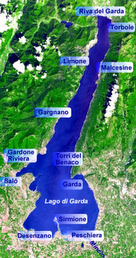

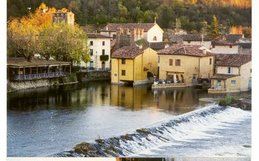
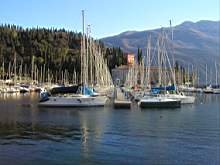
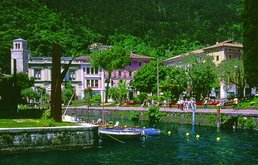
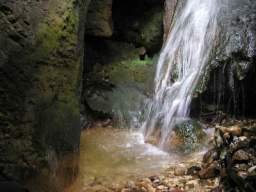

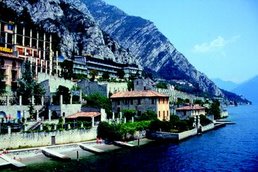
Nessun commento:
Posta un commento